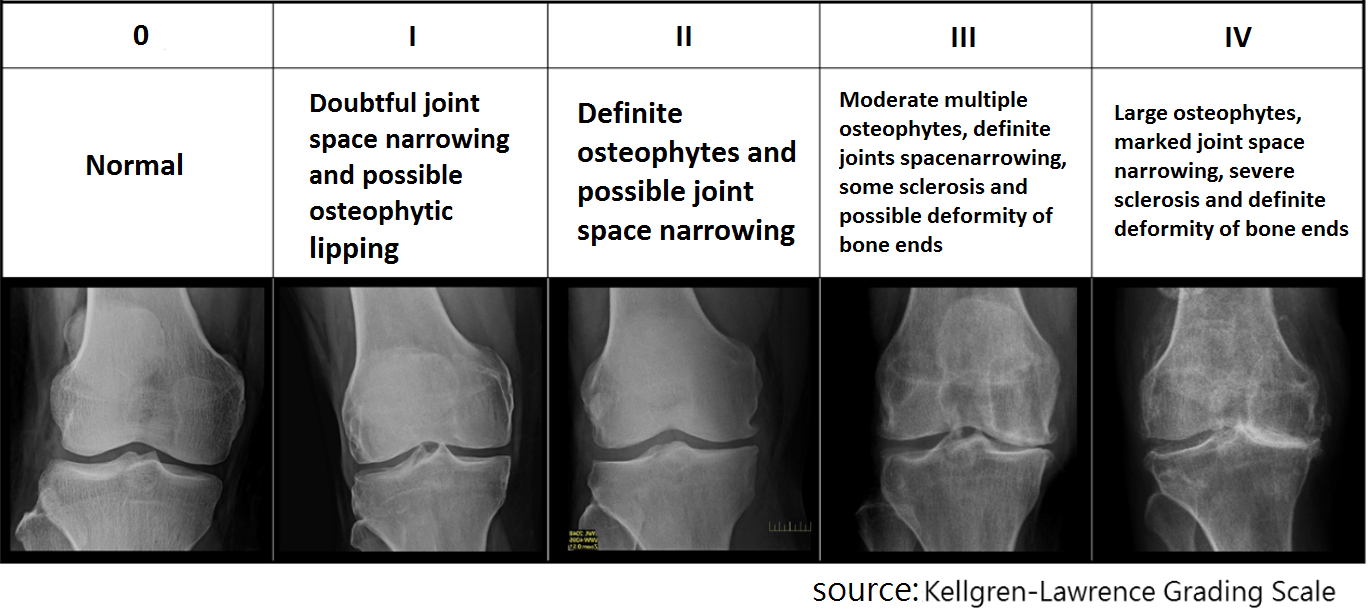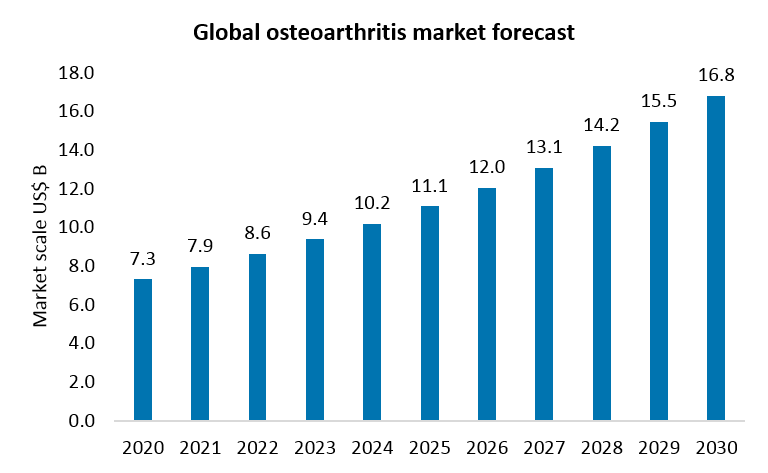

CBO-012 Injection
The 2026 global population with osteoarthritis
US$274MThe 2030 global osteoarthritis treatment drug market
US$16.8B- CBO-012 can reduce the pain and infection risk of multiple administrations of current treatments.
- One injection treatment is estimated to have a curative effect of 3 to 6 months.
- It can inhibit joint inflammation factors, slow down cartilage degeneration and hard bone loss.
- The drug is highly safe and can avoid the cardiovascular toxicity or gastrointestinal side effects of current drugs.
Indications
- Osteoarthritis
Stage
Osteoarthritis
Market Overview
According to data from Market and Market, the global osteoarthritis market in 2020 was US$7.3 billion, with a CAGR value of 8.7%, and in 2030 it is estimated to exceed US$16.8 billion. The main factor of the growth is Increasing aging population. According to GlobalData, by 2026, as the population ages, the number of people suffering from osteoarthritis worldwide is estimated to exceed 274 million. That is, approximately 70% of the elder above 70 are likely to suffer from osteoarthritis. In addition, the age of patients moves down gradually. US Centers for Disease Control and Prevention indicates that arthritis affects 54 million adults, equivalent to one in four adults, in the USA. Arthritis results in limited mobility in about 24 million adults in America. It is estimated that the annual medical expenses for arthritis are as high as US$140 billion.
Introduction to Osteoarthritis
Osteoarthritis(OA) is the most common of joint disorders. It is characterized by joint cartilage deterioration, resulting from wear and tear, and causing pain and impaired mobility. The deterioration is divided into four levels according to the severity (refer to the figure below).
In general, the current treatment drugs or methods for osteoarthritis are mostly analgesics and non-steroidal anti-inflammatory drugs (Non-Steroidal Anti-Inflammatory Drugs, NSAIDs), but analgesics are prone to liver toxicity, and NSAIDs are prone to cause gastrointestinal discomfort or liver and kidney dysfunction, and can only treat the symptoms but not the root cause. Besides the traditional oral anti-inflammatory and analgesics, in recent years the treatment strategy for arthritis is mainly joint cavity injection. Therefore, joint injection with better curative effect and lower side effects will be the dominant development trend in treating osteoarthritis in the future.

Kellgren-Lawrence Grading Scale
The KL classification has been commonly used as a research tool in epidemiological studies of OA.
R & D Progress
The company's self-developed osteoarthritis injection CBO-012 is a long-acting sustained-release injection that can reduce inflammatory factors, slow down cartilage degradation and wear, reduce hard bone loss, delay drug release, and increase therapeutic effects. The product is currently in the preclinical stage.



